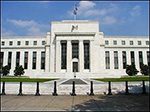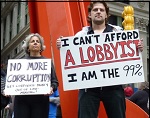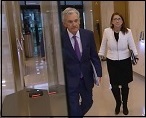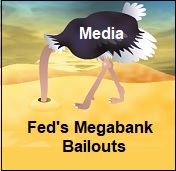-
Recent Posts
- Trump’s “Big Beautiful Bill” Is a Grotesque Giveaway to Fossil Fuel Billionaires While Adding $3.3 Trillion to Nation’s Debt
- Senator Chris Murphy Charges that Trump “Has Opened a Channel for Bribery”
- Congressman Casten: Trump’s Assault on the Rule of Law Is Causing Capital Flight Out of U.S. by Foreign Investors
- Trump’s Approval Rating Drops to 80-Year Low; IMF Says U.S. Tariffs Now Exceed the Highs During the Great Depression
- Nasdaq Has Lost More than 3,000 Points Since Trump’s First Full Day in Office in 2025; the Pain Has Barely Begun
- The Bond Crisis Last Week Was a Global No-Confidence Vote in U. S. President Donald Trump
- Trump’s Tariff Plan Guts $5 Trillion in Stock Value in Two Days; Senator Warren Calls for Emergency Action Before Markets Open on Monday
- Trump’s Attacks on Big Law, Universities, and the Media Have a Common Goal: Silence Dissent Against Authoritarian Rule
- Trump Administration Gives All Clear to Laundering Money through Shell Companies and Bribing Foreign Officials
- Four Megabanks on Wall Street Hold $3.2 Trillion in Uninsured Deposits – Which May Explain Senator Schumer’s Pivot to the GOP to Stop a Government Shutdown
- Here’s What Came Crashing Down Yesterday for Trump’s “Genius” Guy, Elon Musk: Tesla Stock, Access to Twitter (X), His Years of Secret Calls with Putin
- After Banning the Associated Press, Trump Is Now Targeting Specific Journalists That He Wants to See Fired
- Closely Watched Atlanta Fed Model Predicts Negative U.S. Growth in First Quarter
- Trump’s Gangster Diplomacy Makes Front Page Headlines Around the Globe
- Who Benefits Alongside Elon Musk If He Succeeds in Killing the CFPB: the Megabanks on Wall Street that Underwrite His Tesla Stock Offerings
- In Trump 1.0, the State Department Used Taxpayer Money to Publish a Book Elevating Elon Musk to a Superhero; It Was Funded by USAID, the Agency Musk Wants to Quickly Shut Down
- News Host Joy Reid Raises Threat of Trump Selling U.S. to Putin; Ten Days Later Her Show Is Cancelled
- Elon Musk’s DOGE Appears to Be Violating a Court Order; It Has Taken Down Hundreds of YouTube Videos that Educate Americans on How to Avoid Being Swindled
- Barron’s Releases Audio of Jamie Dimon Cursing Out His Workers at a Town Hall, as Dimon Plans to Dump Another One Million JPM Shares
- There’s One Federal Investigative Agency that Neither Trump nor Elon Musk Can Touch: It Just Opened an Investigation into DOGE
- Elon Musk’s Companies Were Under Investigation by Five Inspectors General When the Trump Administration Fired Them and Made Musk the Investigator
- Donald Trump Gives the Greenlight to Goldman Sachs and JPMorgan Chase to Return to Bribing Foreign Officials
- After Tech Geeks Built a Back Door to Loot Billions from FTX, Republicans Refuse to Investigate What Elon Musk’s Tech-Squad Did Inside the U.S. Treasury’s Payment System
- Former Prosecutor, Now U.S. Senator, Informs Tesla That CEO Musk May Be Violating Federal Law and to “Preserve All Records”
- Trump’s Hedge Fund Guy Is Now Overseeing the U.S. Treasury, IRS, OCC, U.S. Mint, FinCEN, F-SOC, and the Consumer Financial Protection Bureau
- As Elon Musk Begins Shutting Down Payments to Federal Contractors, a Strange Money Trail Emerges to His Operatives Inside the U.S. Treasury’s Payment System
- JPMorgan Chase Charged by Yet Another Internal Whistleblower with Cooking the Books
- We Asked Google’s AI Search Model, Gemini, Questions About the Fed and Wall Street Megabanks: It Got the Answers Dead Wrong
- With Trump and Melania’s Crypto Coins Likely to Raise Legal Challenges, Why Didn’t Trump Fire the SEC’s Inspector General in His Purge of IGs?
- Fossil Fuel Industry Could End Up Paying Tens of Billions for LA Wildfires and Deceiving the Public on Climate Change for Decades
- It’s Being Called the Biggest Grift by a President in U.S. History: Trump and First Lady Launch their Own Crypto Coins
- Trump Plans to Install a Fracking CEO to Head the Energy Department and Declare a National Emergency on Energy to Gain Vast Powers
- Fossil Fuel Money Played a Role in the Los Angeles Fires and the Push to Install Pete Hegseth as Secretary of Defense
- When It Comes to Wealth Retention in Retirement, Concrete May Be the New Gold
- Wall Street Watchdog Warns “Clock Is Ticking on a Coming Catastrophic Financial Crash”
- Wall Street Is Sending the Same Message to Americans on Fossil Fuel Financing that It Sent on Cigarettes: Drop Dead
- In a Six-Week Span, this Dark Pool with a Curious Past Traded 3.7 Billion Shares
- Wall Street’s Lobby Firm Hired Eugene Scalia of Gibson Dunn to Sue the Fed for Jamie Dimon
- Postmaster General Louis DeJoy Made $561,051 in Compensation in 2024, as Mail Costs Spiked and Delivery Deteriorated
- Fed Chair Jay Powell Sends a Bold Message to Trump and Tanks the Dow by 1123 Points
- The Head of Fixed Income at T. Rowe Price Makes the Scary Case for the 10-Year Treasury to Spike to 6 Percent
- $663 Billion in Cash Assets Have Gone Poof at the Largest U.S. Banks
- Donald Trump to Ring Bell at New York Stock Exchange Today as Hit List Posters Appear in Manhattan Targeting Wall Street CEOs
- Trump Has a Slush Fund to Prop Up the Dollar – Will He Use It to Prop Up Bitcoin Instead?
- A CEO Assassination; a Billionaire Heiress/NYPD Commissioner; a Secret Wall Street Spy Center – Here’s How They’re Connected
- Despite More than 1600 Tech Scientists Signing a Letter Calling Crypto a Sham, Trump Names a Crypto Cheerleader for SEC Chair
- The Fed Rings a Warning Bell: Hedge Funds and Life Insurers Are Reporting Historic Leverage
- Trump’s Nominee for FBI Director, Kash Patel, Has Businesses Financially Intertwined with Trump
- Donald Trump Is at Risk of Getting Named in a Fossil Fuels Conspiracy Lawsuit
- Trump Is Having Difficulty Getting a Lawyer to Accept the Nomination for SEC Chair: Here’s Why
Search Results for: Federal Reserve
The Fed Pretends to Send a Warning to Wall Street’s Mega Banks on Derivatives and Counterparty Risk

By Pam Martens and Russ Martens: February 29, 2024 ~ On Tuesday, the Vice Chair for Supervision at the Federal Reserve, Michael Barr, delivered a speech at a risk management conference in Manhattan. Barr’s objective was to convince conference attendees that the Fed has its eye on the ball when it comes to Wall Street mega banks and their counterparties who are sitting on the opposite sides of derivative trades totaling tens of trillions of dollars. (Yes, trillions.) The most illuminating and dangerous elements of Barr’s speech are what he didn’t say. To remind attendees of what could happen if counterparty risks were not managed properly, Barr cited Long Term Capital Management (LTCM) and Archegos Capital Management. LTCM was a hedge fund stocked with the so-called “smartest men in the room,” including two Nobel laureates, who fed mathematical formulas into computers that generated trades using astronomical levels of leverage. Of course, this … Continue reading
These Charts Reveal Why the Fed Is Frightened about Capital Levels at the Wall Street Mega Banks

By Pam Martens and Russ Martens: February 22, 2024 ~ According to Federal Reserve data dating back to July 3, 1985 – a span of close to 39 years – there has not been a time when the largest 25 banks were bleeding deposits on the scale that has been happening for the past 22 months. There has also never been a time comparable to the last 22 months when the largest 25 banks were bleeding deposits while the smaller banks were growing deposits. (See the chart above.) To get our minds around today’s situation, we made another chart using Federal Reserve data dating back to 1998 – the year before the Glass-Steagall Act was repealed. It shows that the ratio of deposits of the 25 largest banks to the smaller banks stood at 3 times in 1998 and has shrunk to its lowest level of 2.03 times as of February 7 … Continue reading
Citigroup Is Having a Very Bad Week; Regulators Are Breathing Down Its Neck

By Pam Martens and Russ Martens: February 14, 2024 ~ At the exact moment that the stock market closed on Monday, Reuters dropped a bombshell in Warren Buffett’s lap with news that federal banking regulators are breathing down Citigroup’s neck. Buffett’s Berkshire Hathaway owns 55,244,797 shares of Citigroup, according to its last 13F filing with the SEC. The bulk of the stake was acquired in the first quarter of 2022. (See our report: Warren Buffett Is Taking a Flyer on $3 Billion of Citigroup’s Stock — After It Loses 40 Percent in a Year.) While a $3 billion stock holding is chump change for Berkshire (as of its last 13F filing, it owned approximately $33 billion in Bank of America stock), Buffett has a stock-picking reputation to defend and neither the history of Citigroup nor its troubles today are boosting that reputation. On Monday, with the strike of the closing bell, Reuters … Continue reading
Five Wall Street Banks Hold $223 Trillion in Derivatives — 83 Percent of All Derivatives at 4,600 Banks

By Pam Martens and Russ Martens: February 13, 2024 ~ According to the Financial Crisis Inquiry Commission (FCIC), derivatives played a major role in the financial crash of 2007 to 2010 in the United States, the worst financial crisis in the U.S. since the Great Depression of the 1930s. The FCIC wrote in its final report: “…the existence of millions of derivatives contracts of all types between systemically important financial institutions — unseen and unknown in this unregulated market — added to uncertainty and escalated panic….” Americans believed that the Dodd-Frank financial reform legislation of 2010 would fulfill its promise of reining in concentrated risks like derivatives. It did not. (See our report from 2015: President Has His Facts Seriously Wrong on Financial Reform.) According to data from the Office of the Comptroller of the Currency (OCC), the regulator of national banks, as of March 31, 2009, five bank holding companies held … Continue reading
S&P 500 Sets a Record on Wednesday as Banks Continue Tanking

By Pam Martens and Russ Martens: February 8, 2024 ~ The S&P 500 closed at a record of 4995.06 yesterday while banks – big, medium, and small – continued to see their share prices hammered. And while the media is focusing the public’s attention on the share price collapse of New York Community Bancorp, which as of yesterday’s closing price is down 56 percent year-to-date and had its credit rating downgraded to junk by Moody’s on Tuesday evening, numerous other banks are trading at their lowest levels in two years. Below is just a tiny sampling of what’s going on in the U.S. banking system (that you’re not reading about in the mainstream news). The chart above shows the share price performance over the past two years of the six banks described below. U.S. Bancorp, parent of U.S. Bank, is the 5th largest bank in the U.S. with $663.5 billion in assets … Continue reading
NYCB Downgraded to Junk; Shocking Charts for Citigroup, Barclays and Deutsche Bank

By Pam Martens and Russ Martens: February 7, 2024 ~ New York Community Bancorp (NYCB) closed out 2023 with a share price of $10.23. At the closing bell yesterday, its share price was $4.20 – a year-to-date decline of 59 percent. More pain is expected today as the credit rating agency, Moody’s, cut the regional bank’s credit rating two notches to junk after the market closed yesterday. Moody’s noted in its downgrade that a third of the bank’s deposits lack FDIC insurance. Uninsured deposits were a key factor in the rapid meltdown of Silicon Valley Bank in March of last year as $146 billion in deposits attempted to exit the bank in the span of 48 hours, leading to the FDIC being forced to take the bank into receivership. NYCB’s rapid share price descent began on January 31 when the bank filed an 8K form with the SEC indicating a $260 million … Continue reading
Reporters Who Ask Tough Questions at Fed Press Conferences Have a Habit of Being Disappeared from the Room

By Pam Martens and Russ Martens: February 6, 2024 ~ The Fed’s longstanding relationship with reporters who are allowed to attend the Fed Chair’s press conferences is akin to a master class in Stockholm Syndrome. Your survival in this room depends on your subservience to intellectual capture by the woman who runs this room with the precision of a heat-seeking missile. A growing number of Fed watchers believe that it is Michelle Smith, the Director of Communications at the Fed for the past 23 years, who is quietly cracking the whip. Smith is now such a critical part of policing every word spoken to the public by or about the Fed that she appeared walking beside Fed Chair Powell in one of his rare interviews on 60 Minutes this past Sunday. Consider the following cases of disappeared reporters from the Fed’s press conferences. On September 7, 2021, reporter Michael Derby of the … Continue reading
Bank Fraud Enters a New Era: Bank-to-Bank Wire Transfers Loot Customers

By Pam Martens and Russ Martens: February 2, 2024 ~ Yesterday, the U.S. Senate Banking Committee held a hearing under the title: “Examining Scams and Fraud in the Banking System and Their Impact on Consumers.” Let that title sink in for a moment – “Scams and Fraud,” “Banking System.” That’s the federally-insured banking system of the United States of America in which millions of Americans have entrusted their life savings because they believe it to be the safest place to put their money. Indeed, federally-insured banks had been the safest place to put money since 1933, when the Glass-Steagall Act was signed into law, until the repeal of the Act by the Wall Street friendly Bill Clinton administration in 1999. Thanks to that egregious repeal of critical consumer protection legislation, the following has happened: Trading casinos on Wall Street have been allowed to merge with federally-insured banks with a porous wall of … Continue reading
Senator Sherrod Brown Takes on the Fed’s Support of Wealth Stripping the Middle Class

By Pam Martens and Russ Martens: January 31, 2024 ~ Smart Americans have found two ways to outwit the wealth extraction machinery on Wall Street. They buy a home and build its value over time with sweat equity; and/or they start their own small business. A very large number of Americans who are living comfortably in retirement today built their wealth through one or both of these avenues. Wall Street banks, on the other hand, typically extract wealth from the little guy in a multitude of insidious ways – from high interest credit cards to excessive fees, tricked-up mortgages and outright frauds. Nothing better illustrated this wealth stripping than the 2013 PBS program from Frontline called The Retirement Gamble. The program documented the following: If you work for 50 years and receive the typical long-term return of 7 percent on the stock mutual funds in your 401(k) plan, and your fees are 2 … Continue reading
The Fed Has a Dirty Little Secret: It’s Been Allowing the Wall Street Mega Banks to Calculate their Own Capital Requirements

By Pam Martens and Russ Martens: January 29, 2024 ~ On July 27 of last year, the Vice Chair for Supervision at the Federal Reserve Board of Governors, Michael Barr, made the following statement as part of the proposed new capital requirements for mega banks in the U.S. – revealing the stunning news that the serially-charged mega banks on Wall Street have been allowed to use their own internal risk models to tell the Fed how much risk-weighted assets they have and, thus, how much capital they need to hold. Barr stated: “For a firm’s lending activities, the proposed rules would end the practice of relying on a bank’s own individual estimates of their own risk and instead use a standardized, but risk-based measure of credit risk. Standardized credit risk approaches do a reasonably good job of approximating risks, while internal models are prone to underestimate such risks. “Second, for a firm’s … Continue reading

